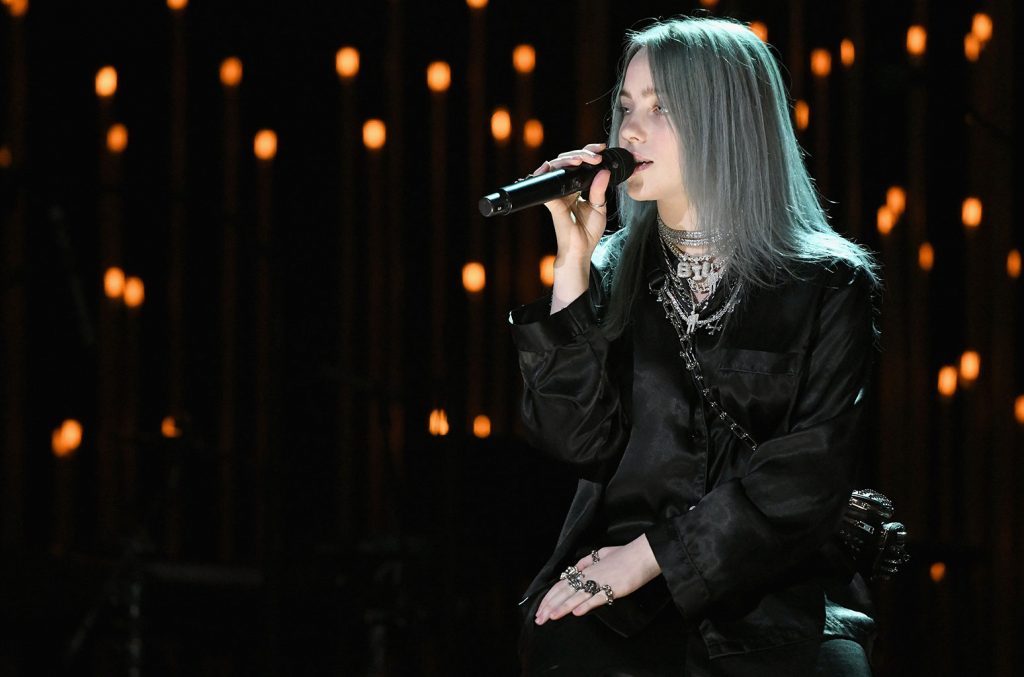On Mar. 29, 17-year-old American artist Billie Eilish released her latest studio album “When We Fall Asleep, Where do We Go?” to mixed success. The album swept the audience off its feet with a surge of conflicting emotions—from intrigue to confusion, unease, and downright terror. With a rejuvenating outlook on the terrors of life, Eilish emotionally urges her listeners to consider their latent yet monstrous thoughts, impressively crafting art that dares to explore the more ominous human emotions and experiences of gloom, horror, and depression.
“I am a passionate fan of Billie Eilish and her work,” said Elaine Choi (10). “She uses moody and heavy background music, which is in contrast with her soft and girly voice, and her understated vocals make it soothing to listen to her music. In the beginning, I thought that the album was about sleep paralysis and nightmares, but I think sleep may also be a figurative representation of death. Billie might have been communicating a greater philosophical meaning—the fate of mankind after death.”
The strength of Eilish’s music and voice derives itself from its very ambiguity and complexity, inviting the listeners to interpret the meaning of her songs in creative ways. “Bury a Friend,” the cover song that went viral in her new album, is speculated to be written from the perspective of a weary monster underneath the bed that haunts Eilish and usurps her passion and will to live. Though Eilish shows the nightmares and emotional torment she undergoes because of the “monster,” she interestingly shows empathy and curiosity of its existence, suggesting that perhaps she represents her own demon and is the cause of her own malice. Others believe that the true meaning behind the song is the criticism of the music industry, as hands of mysterious and unseen people continue to abuse Eilish as she reveals that she is be possessed by the devil. The portrayal of her blank and depressed eyes may signify abuse and trauma-based mind control by the music industry’s elite.
“Even though Billie Eilish is a creative, inspiring, and talented artist, I was always shocked by the the style of her music and this album wasn’t an exception,” said Shawn Yoon (10). “The scenes in her music video felt like they came out from a horror movie, and her gothic taste was uneasy to listen to, especially when there were sounds of a girl shrieking, giggling, and humming in the background. It was definitely frightening to see black tears stream down her face, needles plunge into her back, and spiders crawling all over her face.”
The opinions of those who listen to Billie Eilish’s songs are greatly polarized, as some are terrified by the music while others are enamored by its unique qualities. However, most can agree that Eilish’s struggle with Tourette syndrome— a neurological disorder characterized by involuntary movements—and her efforts to overcome other psychological instabilities had a great influence in the originality of her music and artistic expression. According to New Musical Express, the dark emotions of loneliness and depression she coped with drove the mystique of her new album, and her personal suffering with night terrors and lucid dreams inspired the creation of her songs. Eilish’s openness about her mental struggles and emotions enabled her to connect even more strongly with her fans.
“I’m impressed at the quality of music Billie is able to produce, blending pop with electronic, and at times, hip hop,” said Megan Lee, high school English teacher. “Her music is calming enough to listen to while working on projects, but when you actually listen to the lyrics, they’re dealing with complex issues that currently our teenagers go through like excessive criticism (both good and bad), and peer pressure in illicit activities. She’s using her love of music to work through these issues. My generation had Adele. Your generation has Billie.”

